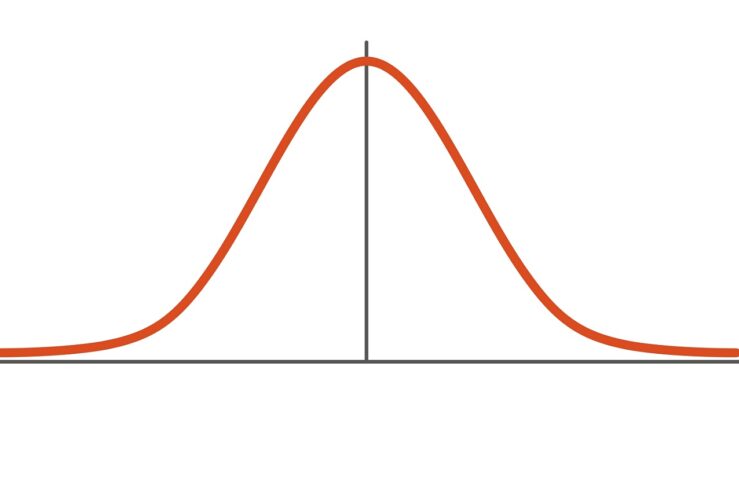Showing archive for: “Hart–Scott–Rodino”
Antitrust at the Agencies Roundup: Spring Has Sprung
Last week was the occasion of the “spring meeting”; that is, the big annual antitrust convention in Washington, D.C. hosted by the American Bar Association (ABA) Antitrust Section. To engage in a bit of self-plagiarism (efficient for me, at least), I had this to say about it last year: For those outside the antitrust world, ... Antitrust at the Agencies Roundup: Spring Has Sprung
A Consumer-Welfare-Centric Reform Agenda for the Federal Trade Commission
As we approach a presidential election year, it is time to begin developing a comprehensive reform agenda for the Federal Trade Commission (FTC). In that spirit, this post proposes 12 reforms that could be implemented by new leadership, either through unilateral action by a new chair or (in some cases) majority votes of the commission. ... A Consumer-Welfare-Centric Reform Agenda for the Federal Trade Commission
The FTC’s (and DOJ’s) Merger Aversion
There is mounting evidence that both the Federal Trade Commission (FTC) and the U.S. Justice Department’s (DOJ) Antitrust Division (DOJ) are, under their current leadership, hostile to mergers. There are multiple elements to this evidence. Draft Merger Guidelines The recently released draft merger guidelines provide a strong indication of the agencies’ general aversion to mergers. ... The FTC’s (and DOJ’s) Merger Aversion
Abandoning Antitrust Common Sense: The FTC’s New Normal?
This symposium wonders what exactly is “The FTC’s New Normal”? The short answer: scary. The current Federal Trade Commission (FTC) leadership is clear that old U.S. Supreme Court opinions, rather than more recent jurisprudence, are their lodestones for antitrust analysis. This is dramatically illustrated by the draft merger guidelines recently proposed by the FTC and ... Abandoning Antitrust Common Sense: The FTC’s New Normal?
The FTC Tacks Into the Gale, Battening No Hatches: Part 2
Part 1 of this piece can be found here. Emergence of the ‘Neo-Brandeisians’ Thus, matters unfolded until the curtain began to descend on the second Obama term in 2016. In the midst of presidential primary season, a targeted political challenge to the prevailing economic approach to antitrust first came to light. No one has yet ... The FTC Tacks Into the Gale, Battening No Hatches: Part 2
Antitrust at the Agencies Roundup: Back to the Past Edition
Labor Day approaches with most of us looking forward to a long weekend off, but there’s much in competition world looming on the horizon. As I am looking forward to a couple of days off, I’ll offer more of an annotated bibliography than analysis. But also a bit of discussion, because I am what I ... Antitrust at the Agencies Roundup: Back to the Past Edition
Antitrust at the Agencies Roundup: Kill All the Widgets Edition
Over the river, into the woods, and down into the weeds we go. There’s a whole lot of drama going on at the Federal Trade Commission (FTC), not least because of recent correspondence between the U.S. House Oversight Committee and FTC Chair Lina Khan that might politely—euphemistically, really—be termed “heated.” But I’m not gonna go ... Antitrust at the Agencies Roundup: Kill All the Widgets Edition
Mergers and Innovation: DOJ and FTC Take Heed
Economists have long recognized that innovation is key to economic growth and vibrant competition. As an Organisation for Economic Co-operation and Development (OECD) report on innovation and growth explains, “innovative activity is the main driver of economic progress and well-being as well as a potential factor in meeting global challenges in domains such as the ... Mergers and Innovation: DOJ and FTC Take Heed
FTC Biweekly UMC Roundup – Mountain of Puffery Edition
Research still matters, so I recommend video from the Federal Trade Commission’s 15th Annual Microeconomics Conference, if you’ve not already seen it. It’s a valuable event, and it’s part of the FTC’s still important statutory-research mission. It also reminds me that the FTC’s excellent, if somewhat diminished, Bureau of Economics still has no director; Marta ... FTC Biweekly UMC Roundup – Mountain of Puffery Edition
Why FTC Competition Rulemaking Likely Will Fail
I. Introduction In over a century of existence, the U.S. Federal Trade Commission (FTC) has been a policy leader in developing American thinking about and in enforcing antitrust and consumer protection laws pursuant to several specific statutory mandates. It has also promulgated a substantial number of consumer protection rules, dealing with a wide variety of practices. ... Why FTC Competition Rulemaking Likely Will Fail
FTC UMC Roundup – Welcome to the Press Tour
Welcome to the FTC UMC Roundup for June 10, 2022. This is a week of headlines! One would be forgiven for assuming that our focus, once again, would on the American Innovation and Choice Online Act (AICOA). I heard on the radio yesterday that it’s champion, Sen. Amy Klobuchar (D-MN), has the 60 votes it ... FTC UMC Roundup – Welcome to the Press Tour
Labor Antitrust Analysis Should Focus on Actual Anticompetitive Agreements
Biden administration enforcers at the U.S. Justice Department (DOJ) and the Federal Trade Commission (FTC) have prioritized labor-market monopsony issues for antitrust scrutiny (see, for example, here and here). This heightened interest comes in light of claims that labor markets are highly concentrated and are rife with largely neglected competitive problems that depress workers’ income. ... Labor Antitrust Analysis Should Focus on Actual Anticompetitive Agreements















